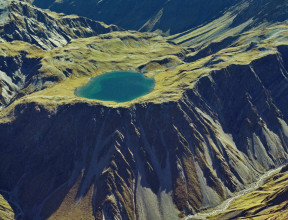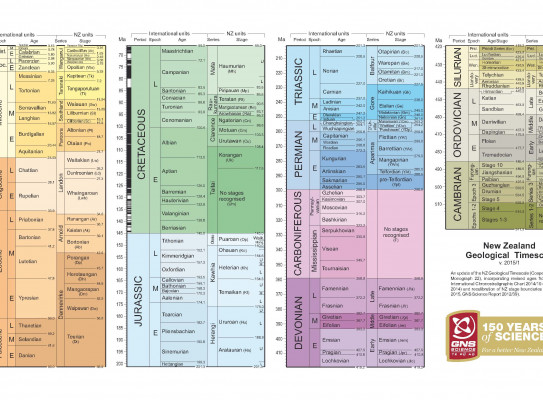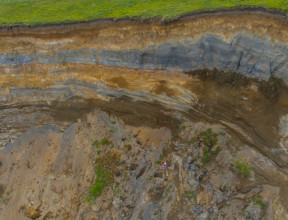
New Zealand's geological timescale

Geological timescales assign ages to rocks, fossils and minerals. They are used to work out rates of geological processes and events, such as earthquakes, eruptions, submergence, uplift, erosion, sea-level change, climate history, biodiversity change and organic evolution.
GNS Scientists have produced an updated geological timescale for New Zealand going back 540 million years to a period known as the Cambrian.
One way of correlating rock ages is to use the fossils contained within rock units.
The earliest timescale concepts were developed in the late 1700s and early 1800s. In those days, people had very little idea of how old the rocks were in years, but they were able to establish the relative ages of separated rock units by studying the fossils.
Fossils are still by far the most widely used means for dating rocks. As our knowledge has grown, it has become possible to in many cases to establish “stepping-stones” between fossil assemblages which are restricted to different parts of the world, often using the fossils of microscopic plankton, especially foraminifera, dinoflagellates, nannofossils, and others. Because these organisms float around in the upper layers of the ocean, some of them achieve a world-wide distribution. Nevertheless, the regional timescales used around the world retain their usefulness and researchers continue to develop and refine them.
On land, the spores and pollen dispersed by plants are among the most useful fossil groups. Wind-blown pollen also occurs commonly in near-shore marine sediments, which provides a stepping-stone to correlate between the marine and terrestrial realms.
Another method of dating rocks is radiometric dating.
The proportions of particular isotopes of elements in the rocks are measured. Certain elements begin to decay radioactively as soon as the mineral crystallises, slowly changing their isotopic character. The decay rate is, in effect, a 'geological clock'.
By measuring the amount of the parent and daughter elements and isotopes, and then applying the decay rate, the age of the rock can be calculated. This method is generally applied to igneous or metamorphic rocks and, even then, may not be accurate if the rocks have undergone more heating and deformation after their formation.
An advantage of radiometric dating techniques is that they directly yield ages in years, which can then be used to calibrate (assign a “number of years ago” value to) fossil ages.
Developing New Zealand's geological timescale
There is no way of absolutely relating all New Zealand rocks to the international time scale. The age is typically inferred from global correlations, or from the relationship of one set of rocks to another whose age is known. The isolated position of New Zealand has made correlation with some other parts of the world difficult. Therefore, at GNS, we are continuing to work hard to understand our continent's past and origins.
The first steps towards developing a New Zealand Geological Timescale began as long ago as the late nineteenth century, with important bursts of progress in the 1940s and 1980s.
All the work up to that point was summarised in 2004, in a landmark publication(external link) edited by the late Roger Cooper. This volume provided absolute age calibrations for all of the local New Zealand age units, tying them back to the latest version of the international timescale that was available at the time.
Since then, work has continued on both the local and international timescales; a series of revisions has appeared subsequently and yet another is underway at present. The most recent version was published in 2015 and is available in several formats (see links).
The scale ranges from New Zealand’s oldest rocks formed about 500 million years ago, to the most recent period known as the Quaternary, which spans from 2.6 million years ago to the present. This is one of the most intensively studied parts of the geological record, mainly for providing insights into climate change.
